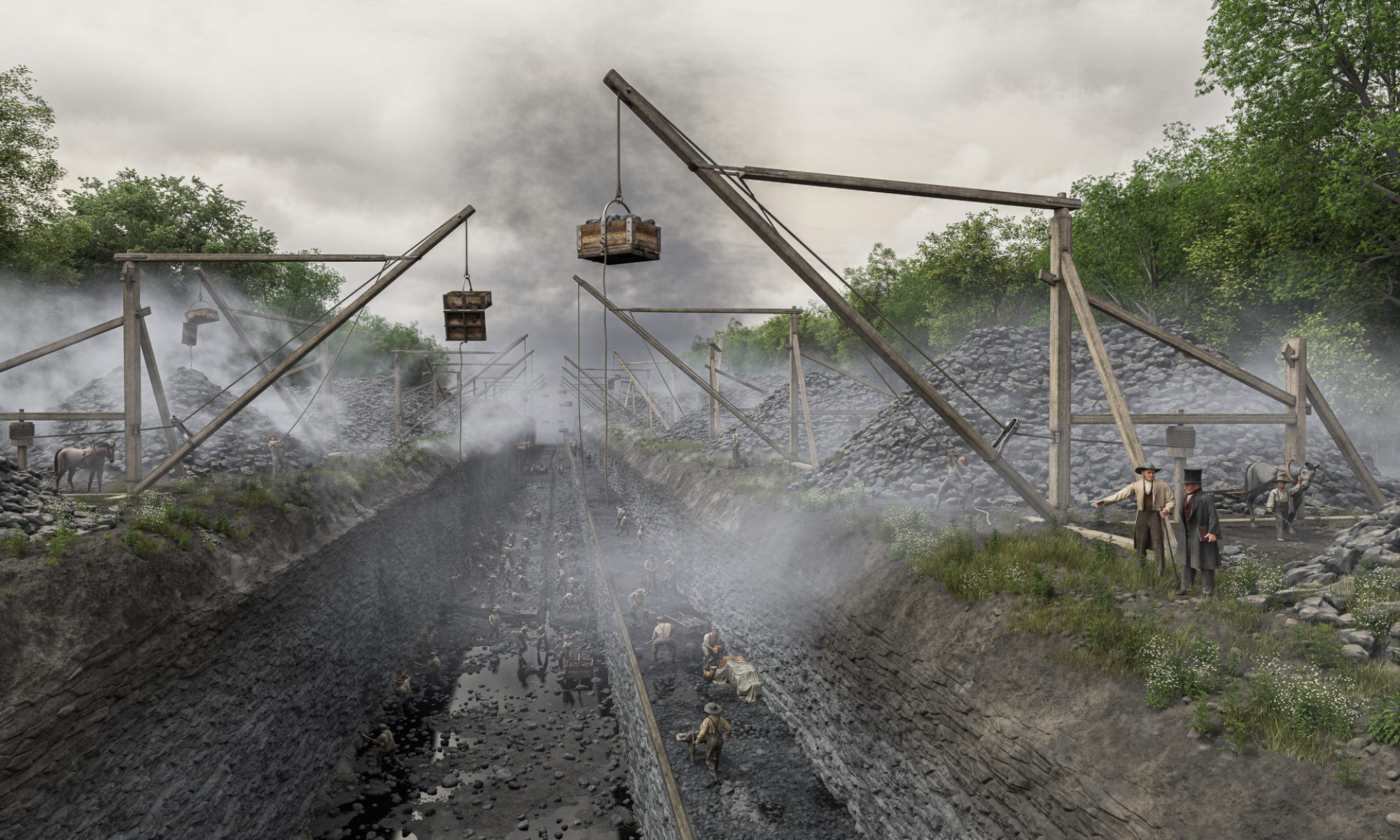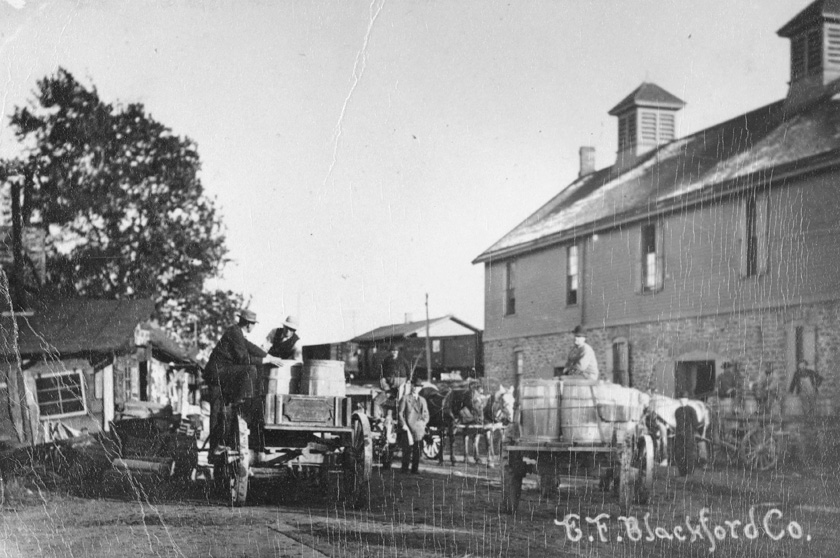
The Adams Basin scene is shaping up bit by bit, much of it unplanned. But if there is a theme, it might be “transportation.”
The juxtaposition of the Erie Canal, lift bridge, steam-powered and towed canal boats, and an interurban passenger car isn’t accidental. The original canal followed a natural corridor, and once the route was pioneered other modes of transportation soon followed.
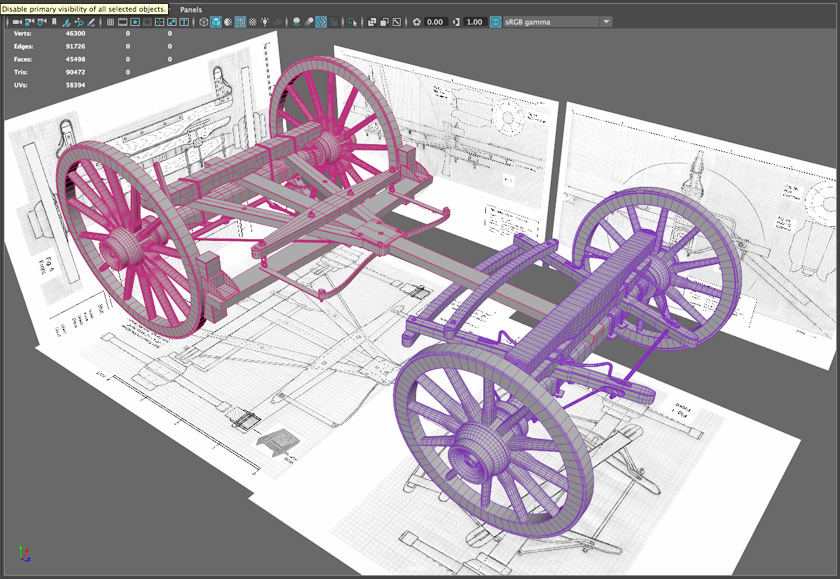
Thousands of businesses also sprung up along the canal. In Adams Basin one of these was the E. F. Blackford Co., a fruit wholesaler that built a complex of warehouses and a railroad siding that allowed it to ship its produce on the New York Central Railroad, which paralleled the canal. (All of these structures, including the railroad, have long since disappeared.)
The warehouses are too far from the bridge to be included in the scene, but in a nod to the business, we’ll include a farm wagon on its way to deliver a load of produce.
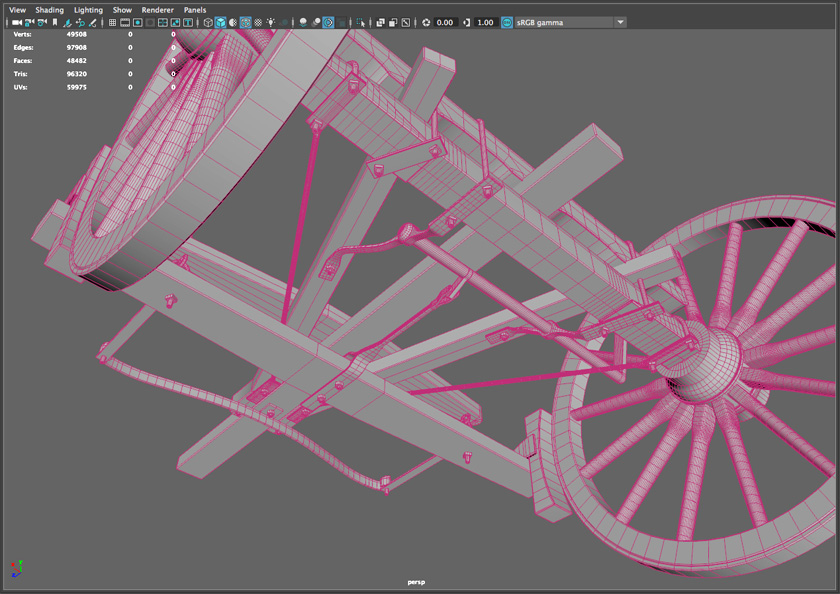
Back in the day, the ubiquitous box farm wagon was manufactured by various suppliers, and nearly all followed the same basic pattern. We’ll base ours on the wagon built by the Studebaker Brothers Manufacturing Company in South Bend, Indiana. (Later it became the Studebaker Corporation and manufactured automobiles until the early 1960s.)
As a reference I’m using a fine set of plans of a Studebaker Wagon drawn by Bob Kuntz. The plans diagram the wagon’s running gear or wheel assemblies. The box and seat are based on historical photos.
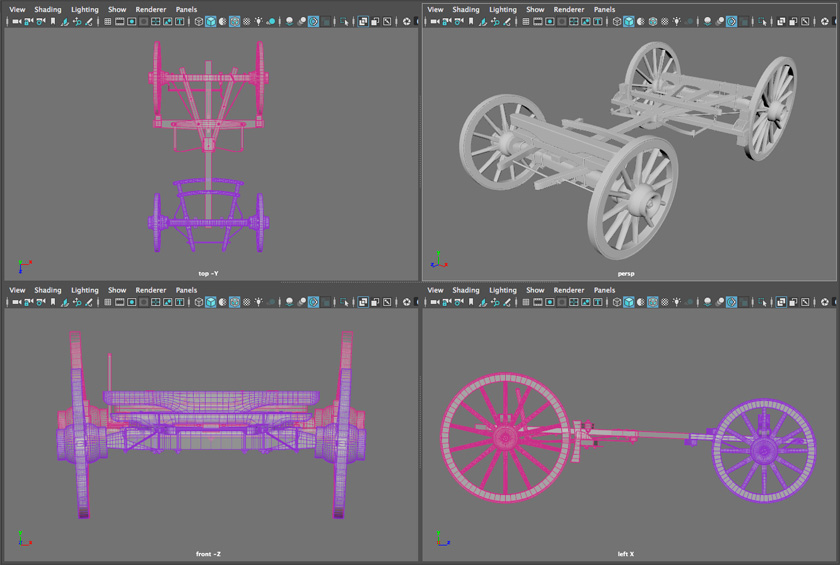
The wagon, lightweight and rugged, featured dished wheels (to increase strength) that were cambered (tilted out to keep the bottom rung perpendicular to the ground). The rudimentary brake system was optional. Most wagons were shipped without brakes, and drivers counted on their skill and the ability of their teams to control the vehicle on grades.
It’s interesting how the lives of rural Americans had barely changed despite a century of innovation. Even as canals and railroads were built, steam harnessed to power boats and locomotives, and electricity generated to lift steel bridges and push interurban cars, the average farmer still depended on horse power and centuries-old technology to get his produce to market.
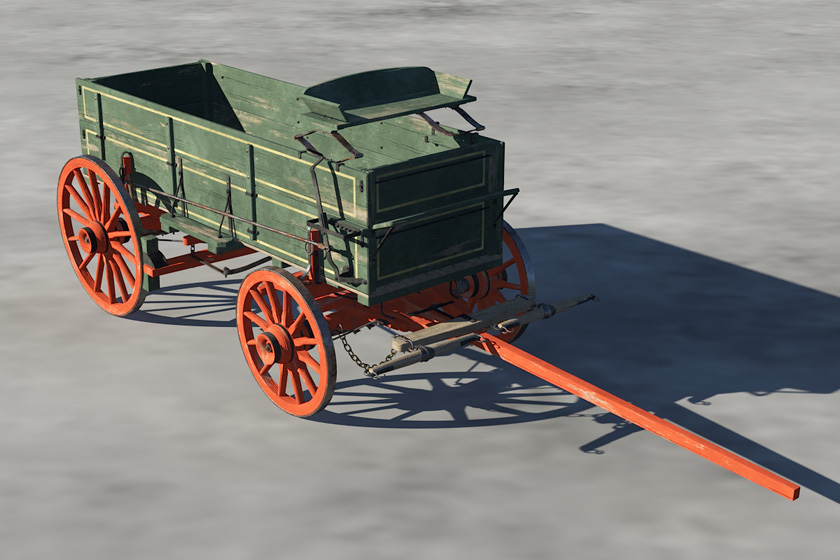
Besides the farm wagon I’ve also built a dray, a heavy-duty truck based on model plans from the Vilas County Lumber Company.

Now we just need horse teams, drivers, and produce for the wagons to haul.
